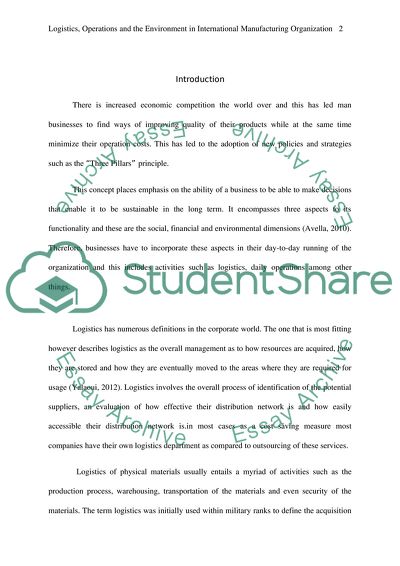Cite this document
(Environmental Aspect of Logistics Management Report Example | Topics and Well Written Essays - 3000 words - 1, n.d.)
Environmental Aspect of Logistics Management Report Example | Topics and Well Written Essays - 3000 words - 1. https://studentshare.org/environmental-studies/1823010-from-an-environmental-perspective-discuss-the-relationship-between-logistics-operations-and-the-environment-in-international-manufacturing-organisations
Environmental Aspect of Logistics Management Report Example | Topics and Well Written Essays - 3000 words - 1. https://studentshare.org/environmental-studies/1823010-from-an-environmental-perspective-discuss-the-relationship-between-logistics-operations-and-the-environment-in-international-manufacturing-organisations
(Environmental Aspect of Logistics Management Report Example | Topics and Well Written Essays - 3000 Words - 1)
Environmental Aspect of Logistics Management Report Example | Topics and Well Written Essays - 3000 Words - 1. https://studentshare.org/environmental-studies/1823010-from-an-environmental-perspective-discuss-the-relationship-between-logistics-operations-and-the-environment-in-international-manufacturing-organisations.
Environmental Aspect of Logistics Management Report Example | Topics and Well Written Essays - 3000 Words - 1. https://studentshare.org/environmental-studies/1823010-from-an-environmental-perspective-discuss-the-relationship-between-logistics-operations-and-the-environment-in-international-manufacturing-organisations.
“Environmental Aspect of Logistics Management Report Example | Topics and Well Written Essays - 3000 Words - 1”. https://studentshare.org/environmental-studies/1823010-from-an-environmental-perspective-discuss-the-relationship-between-logistics-operations-and-the-environment-in-international-manufacturing-organisations.


